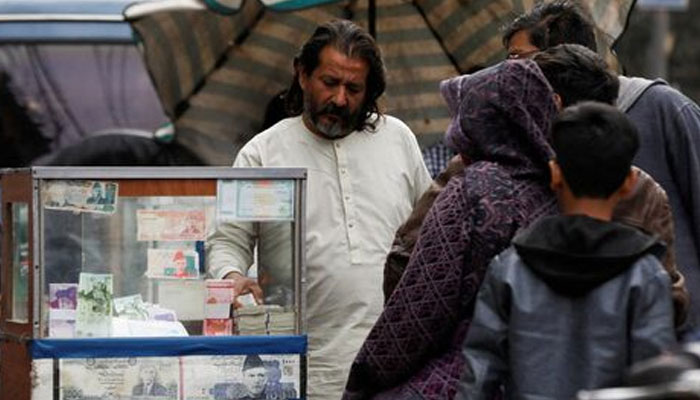Pakistan’s perpetual fiscal déjà vu
Author says rarely has Pakistan been able to sustainably exceed a tax-to-GDP ratio greater than ten per cent
IN popular culture, Groundhog Day is referred to as a day that keeps repeating infinitum, without much change. The protagonist, even after doing things differently in the day, dies in the end — only to wake up to relive the same day, all over again.
The budget-making and announcement exercise in Pakistan is akin to Groundhog Day. The protagonist may try to make tweaks, and bring change for good — only to end up in the same situation they started from. Although the process has only repeated a finite number of years, real life does not have infinite timelines. In such a scenario, there is no reset button, and a slow death is already in progress.
Budget documentation from even seventy years back clearly stipulates that tax collection needs to improve, and so does the tax-to-GDP ratio — having largely remained in the same range over the last seventy years. Rarely have we been able to sustainably exceed a tax-to-GDP ratio greater than ten per cent. It seems we are allergic to collecting taxes formally, lest more resources be available and a better fiscal position be attainable.
The toolkit utilized by the few good men making the budget largely remains unchanged as well. Despite incessant noise that the tax net actually needs to be expanded, the book keepers remain adamant on further deepening the tax net. This results in a heavily taxed salaried segment and corporate sector, while the rest of the economy remains largely free from any direct taxes.
The incidence of direct taxes has reached a point where the corporate tax rate, in addition to taxes on dividends and other quasi-taxes in Pakistan, are all not just among the highest in the region, but also higher than many developed countries. Through its taxation structure, the government actively discourages formal investment in the economy; it makes little sense to invest formally in an economy where the taxman takes away more than half of any profits without taking any risk. It should not come as a surprise to those at the helm as to why there is rarely any foreign direct investment in the country.
One can do all the roadshows, and a series of low-quality slide decks, but if local capital is not being mobilized to invest in the economy, there is no reason why any foreign capital will follow. The taxation structure is such that investing in the local economy formally actually destroys value, rather than creating any additional value in the process. Simply put, there can’t be new foreign investment, till we actually mobilize local capital through a better taxation structure. The paternal urge to micromanage every single investment through participation trophies needs to be replaced by a conducive policy framework that encourages investment, rather than divestment.
The increased incidence of direct taxation on the salaried segment has led to a point that there has been a mass exodus of quality human capital from the country from all value-added sectors. The marginal increase at which human capital is exiting the country is a few hundred dollars, at this point – because even these few hundred dollars are material in an environment where local currency has always been on shaky ground. A taxation structure that actively discriminates against intellectual capital is solely to be blamed here.
The economic incentives through fiscal policies aligned by the state are such that one is better off flipping real estate that only exists on paper for a living, than teaching in a university, doing research, or treating patients, etc.
The state at this point has clearly communicated that you are better off being highly educated outside the country, than within it. As technology and flow of capital has evolved, value-added human capital is increasingly keeping its income outside the country. In the case of technology companies, the central bank through forced conversions of remittances actively encourages such entities to keep their capital outside. Once again, why would any entity invest formally in the country, when the institutions of the state actively discourage bringing in and accumulating local capital?
The priorities of the sovereign are clear, as communicated through its policy framework. It wants a bigger informal economy, and more cash in the economy, and wants formal capital to simply leave or die a slow death through currency depreciation. The abject refusal of the state to widen the tax net to bring in wholesalers, retailers, agriculture, and real estate into the direct tax net has led to a series of unintended consequences.
Capital has gravitated towards these areas, making capital inaccessible for any industrial- or export-oriented growth. Over the last many years, the sovereign has either refused or has turned a blind eye to bringing these segments into the formal economy – resulting in significant capital being parked in these areas without paying much taxes.
Not a single dollar in export can be generated from such activity, nor can any industrial growth that creates quality jobs even be generated. Reallocation of capital from such unproductive segments of the economy to productive segments should have been the highest priority for any government – but Groundhog Day continues to linger.
The economic growth of Pakistan will continue to be stunted by the refusal of its policymakers to broaden the tax net, and to reallocate capital from unproductive segments of the economy to productive areas. Recurring and perpetual fiscal deficits will continue to weigh heavily on the economy as we keep taking on more debt to push through to the next fiscal year — repeating like it’s Groundhog Day.
The slow death has begun. Growth rates are anaemic, and lower than the population growth rate. Real incomes have not just stagnated, but are declining. Deindustrialization continues to happen, whole intellectual capital is leaving in droves. There is little that is being done to move the economy from a heavily import dependent economy, to an export oriented one since that would require redeployment of capital.
The country needs an aggressive restructuring plan. It needs to move away from cash. It needs to widen the tax net, and increase direct taxes for those who aren’t paying their share. It needs to treat with dignity a large population of the country which has seen its incomes erode, and whose children are malnourished and stunted. But what do we have? Another iteration of Groundhog Day – in which the protagonist refuses to accept there is anything wrong in their actions.
Author is a macroeconomist and assistant professor at IBA.
-
 Simu Liu Reveals How His Family Treated Him After He Started Acting
Simu Liu Reveals How His Family Treated Him After He Started Acting -
 Gwyneth Paltrow Mourns Valentino As She Calls His Death 'end Of An Era'
Gwyneth Paltrow Mourns Valentino As She Calls His Death 'end Of An Era' -
 Three-year-old Allegedly Tortured, Killed During Exorcism In California Church
Three-year-old Allegedly Tortured, Killed During Exorcism In California Church -
 Blake Lively Gushes She And Ryan Reynolds Are 'partners In Everything'
Blake Lively Gushes She And Ryan Reynolds Are 'partners In Everything' -
 Teyana Taylor Reflects On Co-parenting Journey With Ex Iman Shumpert
Teyana Taylor Reflects On Co-parenting Journey With Ex Iman Shumpert -
 Blake Shelton Recalls Being 'nervous Wreck' On Adam Sandler Film
Blake Shelton Recalls Being 'nervous Wreck' On Adam Sandler Film -
 Prince Harry's Lawyer Tells Court Daily Mail Complicit In Unlawful Acts
Prince Harry's Lawyer Tells Court Daily Mail Complicit In Unlawful Acts -
 Meghan Markle Named In Epstein Files With Ghislaine Maxwell?
Meghan Markle Named In Epstein Files With Ghislaine Maxwell? -
 Drunk Driver Tries To Snatch San Diego Deputy’s Gun During Chase
Drunk Driver Tries To Snatch San Diego Deputy’s Gun During Chase -
 After Surgery, Piers Morgan Reminded Of His Remarks About Meghan's Father's Hospitalization
After Surgery, Piers Morgan Reminded Of His Remarks About Meghan's Father's Hospitalization -
 Idris Elba Gets Honest About Managing Real-life Hijack Situation
Idris Elba Gets Honest About Managing Real-life Hijack Situation -
 Royal Family Buries King Charles' Cousin
Royal Family Buries King Charles' Cousin -
 Elizabeth Hurley Faces An Impossible Choice As Son Damian, Beau Billy Ray Cyrus Clash
Elizabeth Hurley Faces An Impossible Choice As Son Damian, Beau Billy Ray Cyrus Clash -
 Rare Pokémon Cards Worth $100k Stolen In New York Shop Robbery
Rare Pokémon Cards Worth $100k Stolen In New York Shop Robbery -
 Chevy Chase Shares Disappointment After 'SNL50: The Anniversary Special' Snub
Chevy Chase Shares Disappointment After 'SNL50: The Anniversary Special' Snub -
 Samuel L. Jackson's Old Movie Found New Life: Here's How
Samuel L. Jackson's Old Movie Found New Life: Here's How




